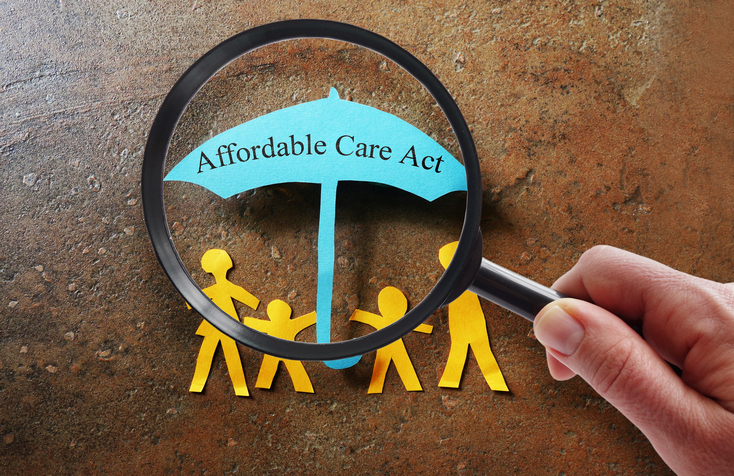

To make the best decisions for their health, people need relevant, inclusive information that speaks to them. But among LGBTQ+ Americans, all too often, people are left without that information. As a result, millions are getting sick.
In a survey for our new study, more than a quarter (27%) of LGBTQ+ respondents told us they have gotten an illness in the past 12 to 18 months due to a lack of health information. That figure is substantially lower (18%) among non-LGBTQ+ Americans.

With the Rise of AI, What IP Disputes in Healthcare Are Likely to Emerge?
Munck Wilson Mandala Partner Greg Howison shared his perspective on some of the legal ramifications around AI, IP, connected devices and the data they generate, in response to emailed questions.
Why is this happening? In part, it’s the result of a deep history of stigma, discrimination and bias in the traditional healthcare system. LGBTQ+ Americans have learned not to trust government health agencies, pharmaceutical companies, hospitals and other health-focused organizations.
In a previous survey, about half the members of LGBTQ+ communities reported experiencing medical gaslighting . (As Prevention.com explains, “Medical gaslighting is when a health care professional dismisses a patient’s concerns or symptoms and wrongly blames their illness or symptoms on psychological factors.) Less than half the LGBTQ+ respondents said their doctor listens to them; that they feel confident communicating with their doctor; and that their doctor takes their opinions seriously.
These kinds of experiences cause lasting damage. Traditional sources of health information struggle to gain the trust of LGBTQ+ Americans. In our survey, nearly half of LGBTQ+ respondents said they do not consider healthcare providers to be a top source of health information. About two-thirds (64%) said they do not believe pharmaceutical companies have their best interests in mind, and 55% said the same about government health agencies.
So LGBTQ+ Americans find themselves, much like other marginalized groups in the health care system, left to fend for themselves. They seek information in other places. And they often have more confidence in the health information they find from less traditional sources. Nearly one in four LGBTQ+ respondents told us they have gone against a recommendation made by their healthcare provider because of information shared by close friends or family. (Again, fewer non-LGBTQ+ respondents said the same.)
This is a wake-up call for government health agencies, pharmaceutical companies, hospitals and other health organizations. It’s time to transform how they create and deliver information to the approximately 20 million members of LGBTQ+ communities.
Bridging the gap
Obviously, addressing systemic discrimination in the healthcare landscape is essential. So, what are the best steps that government health agencies, pharmaceutical companies, hospitals and other health organizations could take?
Respondents made clear that it isn’t enough for these groups to simply take their existing materials and add on mentions of LGBTQ+ communities as an afterthought. Instead, health communicators and marketers should create materials, videos, websites, and other messaging that is specifically designed for these audiences. Learn about and incorporate their concerns about a wide range of health issues, and build campaigns that are primarily about them.
This includes “putting us front and center.” Have people who are members of LGBTQ+ communities be the ones presenting the information. Forty-three percent of respondents told us they would trust information more if it was delivered by a member of their community.
It’s crucial to keep in mind that these communities are multi-dimensional, spanning differences in race, religion, gender identities, and more. Health entities must understand and represent this in their efforts. Have diverse people from within LGBTQ+ communities be involved and showcased. More than a third of respondents in our survey said they want health opinions from people who not only come from the overall LGBTQ+ population, but who specifically share similar identity components as them.
Embrace their trusted sources of information
Like other marginalized groups, LGBTQ+ Americans have curated sources that they turn to for health information. They include friends and family, as well as online influencers, therapists, schools and more.
Health agencies and organizations should consider working with popular figures, such as online influencers, who have gained the trust of LGBTQ+ communities. Partner with these figures to discuss and explore important health issues. Have influencers collect questions from their followers, and then join them on their platforms to provide answers.
Through these kinds of communications and marketing efforts, government health agencies, pharmaceutical companies and other organizations can turn the tides. In our era, with so many resources readily available at people’s fingertips, no one should be falling ill due to lack of information. The health care system has work to do to make up for failures of the past and present in reaching LGBTQ+ Americans. Through these new efforts, health leaders can combat this problem, and deliver greater health outcomes.
Photo: Maskot, Getty Images
Tayla Mahmud is executive vice president, Health Equity & Multicultural Strategy at M Booth Health. She is co-author of the report Chosen Circles: How LGBTQ+ Americans Navigate Health Decision-Making. She leads the agency’s work on Health Equity and Multicultural Communications by counseling public affairs, social impact, and marketing communications clients on strategies to advance health equity, reach diverse communities, and demonstrate commitment to reducing disparities. She is also a board member of BLKHLTH.
Mark Westall is senior vice president, Strategy at M Booth Health. He is co-author of the report Chosen Circles: How LGBTQ+ Americans Navigate Health Decision-Making. He oversees primary research at the agency to uncover actionable insights on audiences, brands and organizations in the healthcare space. He is also responsible for driving innovation, with a focus on developing new products and solutions to serve marketing communications, public affairs, and social impact clients.














